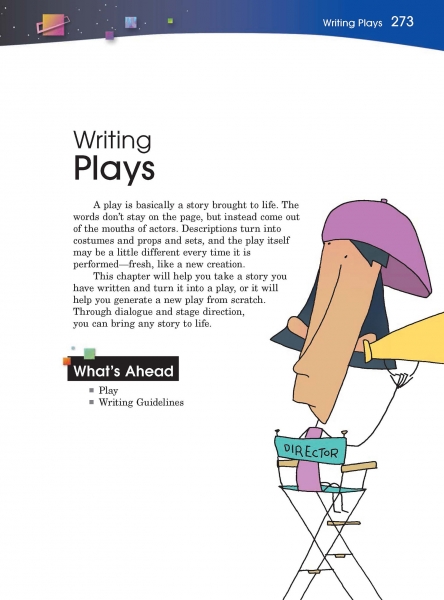Page 273 from

Start-Up Activity
Ask your students why we play music instead of working music, and we play football instead of working football. Music and football both take a lot of work, but we talk about playing them. Ask students for a definition of the verb play. They will probably say something like, "Do something just for fun." Sometimes that is the case, but often music and sports get very serious.
Suggest that the word play in part implies an activity that you do with other people to accomplish a goal. That definition certainly applies to music and football—as well as plays themselves. In the end, all of these activities require performance. They happen in the moment, in front of an audience, and require trained people to do something amazing.
In this chapter, students will learn how to write their own plays.
Think About It
“Life is a song—sing it. Life is a game—play it. Life is a challenge—meet it. Life is a dream—realize it. Life is a sacrifice—offer it. Life is love—enjoy it.”
—Sai Baba

Start-Up Activity
Ask your students why we play music instead of working music, and we play football instead of working football. Music and football both take a lot of work, but we talk about playing them. Ask students for a definition of the verb play. They will probably say something like, "Do something just for fun." Sometimes that is the case, but often music and sports get very serious.
Suggest that the word play in part implies an activity that you do with other people to accomplish a goal. That definition certainly applies to music and football—as well as plays themselves. In the end, all of these activities require performance. They happen in the moment, in front of an audience, and require trained people to do something amazing.
In this chapter, students will learn how to write their own plays.
Think About It
“Life is a song—sing it. Life is a game—play it. Life is a challenge—meet it. Life is a dream—realize it. Life is a sacrifice—offer it. Life is love—enjoy it.”
—Sai Baba